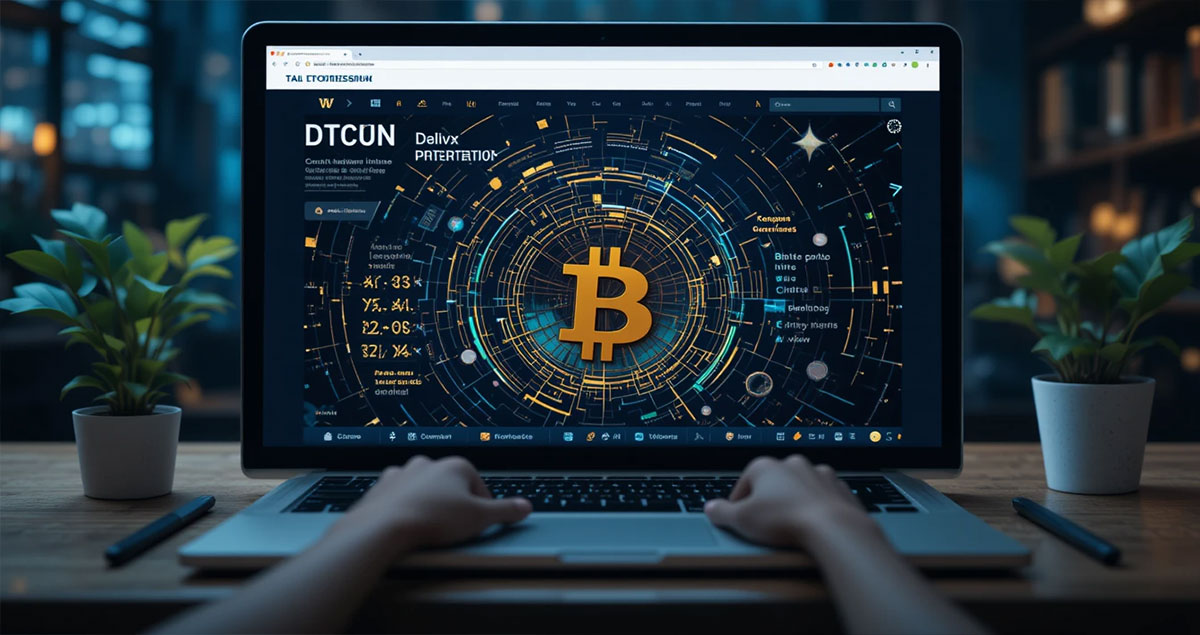Understanding the Crypto Landscape
The Growth of Crypto Projects and the Increasing Threat of Scams
In recent years, the crypto industry has exploded with thousands of new tokens, platforms, and projects launching every single month. Multiple groups of people, ranging from tech experts to complete novices, have been drawn to decentralization and blockchain innovation alongside quick profits. But here’s the catch—while some of these projects are built by credible teams with clear missions, many are outright scams designed to separate you from your hard-earned money.

Think about it: launching a crypto website is relatively easy. A few lines of code, a professional-looking template, some buzz on social media—and boom, a new token appears claiming to change the world. But under the surface, there might be no real utility, no verifiable team, no audited smart contracts, and no long-term vision.
Scammers exploit this ease and anonymity. From rug pulls and pump-and-dump schemes to fake wallets and cloned websites, the tactics are evolving fast. According to multiple blockchain analytics firms, billions are lost annually due to fraudulent crypto projects.
That’s why understanding the broader crypto landscape is your first line of defense. Legitimate projects often emerge from credible ecosystems, have robust roadmaps, receive venture funding, and actively contribute to the blockchain community. On the flip side, scams typically follow a pattern of hype without substance.
Before you trust a shiny new website or throw your funds into a flashy token sale, step back. Ask questions. Do your homework. The crypto world is full of potential, but it’s also filled with traps for the unwary. This article aims to teach you how to navigate that maze smartly.
Checking Website Domain Information and Age
How to Use WHOIS Lookup for Domain Verification
One of the first signs of legitimacy in a crypto project lies in its domain registration details. Scam websites often use freshly created domains to pose as legitimate projects. That’s where a simple WHOIS lookup becomes an essential tool in your verification process.
So, what’s WHOIS? WHOIS functions as an online database that shows domain name registration information, together with ownership and location data, and time stamps of domain registration. Whois.com and ICANN Lookup, and DomainTools serve as free platforms that enable users to obtain a detailed report about any domain with immediate results.
Here’s what you should look for:
- Domain Age: Has the domain been developed in the recent weeks, together in recent days? That’s a huge red flag.
- Registrant Info: Legit domains often have organizational or named individuals listed. Scams use privacy protection or fake names.
- Registrar Name: Domains registered through unknown or shady registrars can signal a problem.
- Expiration Date: Scams often use domains set to expire soon—legit sites typically secure long-term domains.
Let’s compare: a new project claiming to be the “next Ethereum” but using a domain registered just 3 days ago with hidden ownership and a one-year registration? That’s fishy. On the other hand, a domain that’s been live for over a year with transparent ownership and a long registration period? That’s more promising.
Checking a domain is simple, fast, and free, yet many investors skip this step. But just like you wouldn’t buy a house without checking its papers, don’t invest in a crypto project without verifying its domain history.
Look for Secure HTTPS and SSL Certificates
How SSL Secures Your Information
A secure crypto website can be confirmed through the display of an SSL certificate when it operates on HTTPS instead of HTTP. The small difference between HTTP and HTTPS creates major security implications for the connection, combined with data protection.

SSL (Secure Socket Layer) certificates bring encryption to the browser-server communication process. Any sensitive material, including passwords and personal data as well as wallet addresses, remains protected against hackers through encryption.
To verify if a site has SSL:
- Verify the presence of a padlock icon within the browser address bar.
- Check if the URL starts with https://
- Pressing the padlock will reveal information about the certificate issuer alongside verification periods.
If a crypto project’s site doesn’t have SSL? That’s a red flag. Your immediate withdrawal from the website should take place right after receiving either “Your connection is not private” or “Unsecure website” security alerts.
Additional information about SSL can be investigated through SSL Labs’ SSL Test. These tools will let you know:
- Whether the SSL is valid and up-to-date
- The certificate authority that issued it
- The encryption strength being used.
Scammers often skip SSL installation because they’re not interested in user safety—they want your money, fast. Reputable projects, however, prioritize security from day one, including strong SSL setups, secure coding practices, and sometimes even extended validation certificates that add an extra layer of trust.
In a digital world where impersonation is common and phishing is rampant, never ignore that padlock. It’s one of the simplest, clearest signs that a site takes your privacy and security seriously.
Analyzing the Project’s Whitepaper
What a Whitepaper Should Include
Advanced cryptocurrency projects receive their life force from whitepapers. This document presents the project’s purpose alongside its technological approach and examples of use, alongside a breakdown of its financial system aspects and long-term development structures, and introduces the group leading the work. Without an understandable whitepaper or an ill-prepared one, or one stolen from another project, a serious warning sign is indicated.
A high-quality whitepaper should answer these key questions:
- What problem is the project solving?
- How does the technology work?
- Who are the people behind it?
- What’s the token used for?
- How will the funds be used?
- What is the roadmap?
Legitimate projects spend time and effort crafting a detailed, well-written whitepaper that provides technical and financial transparency. Scam projects, however, often slap together buzzwords and recycled content just to appear credible.
Watch out for these common whitepaper red flags:
- Plagiarized content from well-known projects.
- Overly ambitious promises without a technical explanation.
- Lack of a clear roadmap or usage model.
- Fake team names with no verifiable credentials.
- Poor grammar or broken English signals rushed or careless preparation.
Use tools like Turnitin or PlagScan to check for duplicate content. Look up technical terms mentioned in the paper—do they align with blockchain fundamentals? Is the solution viable?
A solid whitepaper is often the backbone of investor trust. If it’s missing, misleading, or poorly written, think twice before diving in.
Researching Team Behind the Project
Verifying Team Members on LinkedIn and GitHub
Your risk level should be high if a crypto project markets a sophisticated team yet provides no methods for identity verification. Transparency in the team is a strong trust signal, and scammers often fake or hide the people behind a project.

Start with LinkedIn. Most legitimate projects link team profiles directly from their site. Visit those profiles and check for:
- Work history in related fields (blockchain, finance, software dev)
- Endorsements and real connections
- Mutual connections with other known figures
- Consistency between the profile and what’s claimed on the site
Next, hop over to GitHub. This platform shows the technical contributions a developer has made. Does the project have public repos? Are the contributors active? If someone claims to be a lead dev but has zero commits or interactions on GitHub, that’s fishy.
Scam projects often use:
- Stock photos or AI-generated images
- Generic names with no online presence
- Fake endorsements or made-up LinkedIn profiles
Team image authenticity verification can be done through searches using tools like Google Images or TinEye. Use GitHub search to cross-check coding activity.
When people are real, experienced, and proud of their work, they don’t hide. If a project is vague about who’s behind it or gives you no way to vet them, that’s your cue to walk away.
Audit Reports and Verified Smart Contracts
Importance of Smart Contract Audits in Crypto
Most token ecosystems, including decentralized applications, build their fundamental structure within the crypto world using smart contracts. Smart contracts function independently to regulate funds and supervise transactions, and implement protocols through decentralized operations. But here’s the danger: a small vulnerability in the smart contract code can be exploited to steal millions in seconds. That’s why independent smart contract audits are critical.
So, what exactly is a smart contract audit? Blockchain and cybersecurity specialists perform complete codebase investigations for a project as part of their thorough analysis. Specialists evaluate the project’s codebase to detect potential bugs, together with possible security holes and weaknesses. A project with proper auditing and public release of the report demonstrates that security and transparency represent top priorities for the team.
The audit industry respects certifying companies such as CertiK, Hacken and SlowMist, Quantstamp, and OpenZeppelin. When auditing reports list approved entities from these respected companies, then it serves as an important indicator for further engagement. Here’s what you should do:
- Check the date of the audit: A recent report is better.
- Read the findings: Look for critical issues and whether they were resolved.
- Verify the source: Is the audit hosted on the firm’s official site or GitHub?
Many scams will fake audits by fabricating PDF reports or misusing a firm’s logo. Students need to verify any report by following it to its official source. You can even contact the auditing company for verification.
Also, inspect the project’s smart contract address on Etherscan, BscScan, or other blockchain explorers. Many legitimate tokens will have badges or audit indicators on these platforms.
Ultimately, a genuine audit reduces risk—it doesn’t eliminate it, but it proves the team has taken serious steps to secure the project. No audit? No confidence. That’s a mantra worth remembering.
Investigating Community Presence and Engagement
Real Engagement vs. Paid Comments and Bots
Strong community involvement, along with high engagement levels, typically demonstrates the legitimacy of any crypto project. But be warned—scam projects are masters at faking popularity. They’ll flood social media with fake likes, spammy comments, and even bot-driven chat rooms to create an illusion of hype. So, how can you spot the difference?

First, head to the project’s social media platforms—Twitter, Telegram, Reddit, Discord, and YouTube are the most common. Take a closer look at their following and interactions:
- Twitter: Are the followers real? Check for engagement metrics—do posts have retweets and thoughtful comments, or just spam emojis and hype words like?
- Telegram/Discord: Are discussions healthy and technical, or just filled with “when moon?” and giveaway spam?
- Reddit: Are there organic conversations and critical feedback, or is the subreddit inactive or overly moderated?
Fake engagement often looks too good to be true—thousands of likes, but no actual conversation. Three platforms, namely SocialBlade, FollowerAudit, and Telegram Analytics, provide tools for detecting robotic activities and fake followers.
Also, try engaging with the community yourself. Ask a question. In real communities, you’ll get thoughtful replies. In scam-driven ones, your question will likely be ignored, deleted, or answered by bots.
A strong community doesn’t just cheer for the token—it asks tough questions, calls out issues, and pushes the devs for clarity. These are the hallmarks of an authentic, transparent, and committed crypto project.
Looking Into the Tokenomics and Use Cases
Understanding Token Distribution and Utility
Electric marketing cannot rescue a hazardous or deceptive tokenomic structure of projects. The structure of a project token involves the supply dynamics and distribution protocols, and its functionality, together with its motivating incentives. When designed properly, it builds value and sustainability. When abused, it leads to pump-and-dumps, rug pulls, or even worse, completely worthless tokens.
So, what should you look for in tokenomics? Here’s a checklist:
- Total Supply: Is it capped or unlimited?
- Token Allocation: What percentage goes to the team, advisors, public sale, and reserve?
- Vesting Periods: Are there lock-up schedules for team tokens to prevent dumping?
- Utility: What real-world or platform-based value does the token provide?
- Burn Mechanism: Are tokens being burned to manage inflation?
A red flag is when a majority of tokens are held by the team or insiders, with little transparency. This means the team can dump their holdings at any moment, crashing the price and walking away rich.
For example, let’s say 60% of tokens are allocated to the team and marketing wallet. The public only gets 10%. That imbalance is risky. But if the team has a 10% allocation with a 2-year vesting schedule, it shows long-term commitment.
You can find tokenomics in the whitepaper, Litepaper, or pitch decks. Some projects even publish this in infographics. Always compare the token’s market cap, liquidity, and trading volume on platforms like CoinMarketCap or DEXTools.
Smart tokenomics builds trust, value, and growth. Scammy tokenomics are all about extraction. Know the difference, and you’ll spot trouble before it’s too late.
Using Blockchain Explorers for Transparency
Verifying On-Chain Activity
Every transaction within blockchain operates under full transparency since each transaction maintains public traces. You can check the quality of new crypto initiatives through blockchain explorers, including Etherscan and BscScan, together with PolygonScan and others.

When you land on a new project’s site, find the smart contract address—they usually display it on the homepage or whitepaper. Plug that into a blockchain explorer and start investigating:
- Number of token holders: Legitimate tokens have thousands of holders, not just a few wallets.
- Top wallet distribution: Are a few wallets holding most of the supply? That’s a danger sign.
- Contract source code: Is it verified? Has it been updated or paused?
- Transaction history: Look at recent activity—are people buying, selling, holding?
Also, check for liquidity pool info on platforms like Uniswap, PancakeSwap, or SushiSwap. If a project claims to have deep liquidity, but you find only $200 in their pool, red flag!
These explorers also offer labels like “Contract Verified,” “Proxy Contract,” or “Mintable,” which tell you how the token behaves. The possibility of token minting without limits, combined with trading restrictions by the owner, constitutes a major risk.
The beauty of blockchain is that data doesn’t lie, but it only works if you know where to look. Spend a few minutes on a blockchain explorer and you’ll learn more than any flashy promo video or whitepaper could ever tell you.
Red Flags That Indicate a Scam Website
Too-Good-To-Be-True Promises and Unverifiable Claims
You should consider an online platform suspicious if it claims to deliver guaranteed 1000% overnight returns while operating in the cryptocurrency industry. Overhyping in crypto advertisements, along with impossible guarantees, serves as the most significant warning sign in this field. Scammers know how to push emotional buttons, luring people in with visions of fast wealth and FOMO (fear of missing out).
Here’s what you should watch out for:
- Guaranteed profits: No legit investment can promise that.
- Zero risk investment: That doesn’t exist in crypto—or anywhere.
- Celebrity endorsements: Many scams use fake images or edited videos of celebrities to look legit.
- Unverified partnerships: Claims of working with companies like Binance, Ethereum Foundation, or Tesla should always be double-checked.
Also, look closely at their roadmap. If it’s vague with no timelines or full of buzzwords like “revolutionary,” “world-changing,” or “AI-powered blockchain ecosystem” without technical substance, it’s likely fluff designed to mislead.
Another major scam indicator is aggressive countdown timers on presale pages or flashing pop-ups claiming “Only 3 spots left!” These are psychological tricks to pressure you into acting quickly without due diligence.
Fake testimonials are common, too. If everyone on the site is raving about how they got rich from this “amazing” platform, but none of the reviewers have a real name, photo, or social presence, you’re probably being conned.
Your instinct serves as a valuable indicator because anything cheap-looking with hasty execution and lurid sweet promises is likely a con. Always take the time to investigate before clicking “Buy.”
Using Online Scam Checker Tools
Trusted Sites and Extensions for Scam Detection
Scientific tools designed for scam detection demonstrate superior performance to traditional manual procedures because they specialize in detecting fraudulent actions. Platforms analyze crowd-sourced information and perform domain analysis to establish credibility ratings for crypto sites through reputation scoring systems.
Here are some highly recommended tools:
- ScamAdviser: This platform provides trust ratings that derive from evaluating website age along with visitor numbers and SSL security, together with user feedback.
- VirusTotal: The system evaluates the website URL for malware together with phishing code, and malicious scripts.
- PhishTank: The database tracks phishing sites through community contributions while receiving regular updates.
- CryptoScamDB (by MyCrypto): The service maintains an identification system for both current and historical crypto scams, which covers wallet draining scams and fake exchange platforms.
- MetaMask & Trust Wallet Warnings: Popular wallets implement automatic security features that prevent users from connecting to scammers’ URLs.
WOT (Web of Trust) and McAfee WebAdvisor extensions, transferred to your browser, will notify you about danger while visiting websites.
When using these tools, pay attention to:
- Trust score or security rating (typically shown on a scale from 1–100)
- User-submitted reports
- Phishing tags or scam warnings
It’s wise to run a website through multiple tools to get a more accurate picture. Just because one scanner doesn’t catch something doesn’t mean the site is safe. The crypto world evolves fast, and some scams stay under the radar until enough users get burned.
Adding these tools to your security toolkit can dramatically reduce your exposure to shady projects and protect your crypto assets from being drained in seconds.
How Legal Compliance Signals Trustworthiness
KYC, AML, and Regulatory Disclosures
What sets real crypto projects apart from scams is their dedication to following legal rules and staying compliant. Not all projects do not need to register with a financial authority, yet projects that independently follow KYC (Know Your Customer) and AML (Anti-Money Laundering) protocols normally lack secrets to hide.

Why does this matter? Because of complying with regulations:
- Protects users from fraud.
- Ensures accountability.
- Attracts institutional and long-term investors.
Here’s what you should look for on a website:
- KYC disclosures: Does the platform require identity verification for token purchases or platform usage?
- AML policy: Is there a published AML procedure or risk framework?
- Registered business: Is there a company name, address, and registration number you can verify?
- Legal terms: Are there Terms of Use and Privacy Policy pages? Legit projects don’t skip these basics.
Also, be mindful of the project’s jurisdiction. Many scam projects are “based” in countries with little to no crypto regulation, often offshore havens. On the other hand, a project registered in Switzerland, Singapore, the U.S., or Estonia usually means they’ve had to pass some form of compliance hurdle.
Always check websites for their legal information. Online vendors who exclude these sections cannot be trusted. If they’re not even trying to meet minimum compliance standards, it shows they’re not in it for the long haul. Regulatory transparency signals credibility, accountability, and investor protection.
Learning from Past Crypto Scam Case Studies
The Rise and Fall of Famous Rug Pulls
History is one of your best teachers, especially in crypto. By looking at case studies of infamous rug pulls, you can start to recognize the warning signs and avoid falling into the same traps. Let’s look at a few real-world examples and the red flags they raised.
Example 1: Squid Game Token (SQUID)
This token soared over 75,000% in a few days before the devs pulled the rug, vanishing with millions in investor funds. What were the signs?
- No verified team members
- No way to sell tokens after buying (a smart contract trap)
- Suspicious whitepaper full of grammatical errors
- Fake association with the Netflix show “Squid Game”
Example 2: DeFi100
Promised decentralized finance solutions, but disappeared overnight after posting “We scammed you all, and you can’t do s*** about it” on their homepage. Ouch. Warning signs?
- Vague whitepaper
- Unverified partnerships
- No public audit
Example 3: OneCoin
One of the biggest crypto scams in history raised billions without ever having a real blockchain. The founder, Ruja Ignatova, vanished and is now on the FBI’s Most Wanted list. Red flags?
- Aggressive MLM-style recruitment
- Fake tech claims
- Secrecy about their coin’s code and infrastructure
Each of these cases teaches an important lesson: don’t ignore the small signs. If the tokenomics don’t make sense, the devs are anonymous, and everything feels rushed or shady, trust your instincts.
The basic approaches of scams exist continuously while their methods adjust to changing times. By learning from the past, you’ll be far better equipped to avoid becoming part of the next sad headline.
Final Checklist Before Engaging with a Crypto Website
A Complete Pre-Investment Legitimacy Checklist
Before you interact with a new crypto project website, here’s a final checklist you can use to determine its legitimacy. Bookmark this list and use it like your personal security guard for the blockchain jungle.

Is the domain age older than 6 months?
Check using WHOIS tools.
Does the site have a valid SSL certificate?
Look for HTTPS and the padlock icon.
Is there a well-written, original whitepaper?
Scan for content clarity and plagiarized sections.
Are the team members real and verifiable?
Look for LinkedIn and GitHub activity.
Has the project undergone a smart contract audit?
Search for audit reports from firms like CertiK or Hacken.
Is the community engaged and authentic?
Avoid projects with bot-driven Telegram or Twitter followers.
Are tokenomics clear, transparent, and sustainable?
Watch out for huge insider allocations.
Can you track real-time blockchain activity?
Use Etherscan or BscScan for transparency.
Are they compliant with basic legal standards?
Check for KYC/AML policies and registered company details.
Have they passed scam checks on trusted tools?
Use ScamAdviser, PhishTank, and MetaMask warnings.
If a project fails two or more of these checks, be cautious. If it fails five or more times, walk away.
Conclusion and Key Takeaways
The decentralized crypto marketplace exists as a domain of profitable prospects as well as an environment where scammers find their prey. Various new projects emerge daily, yet innovation remains the goal of only a small percentage of these entities, while most project teams seek to capitalize on opportunities.
Instincts combined with hype will not protect you, so you need to establish a systematic research and cautious approach. Each new crypto website requires your meticulous evaluation using a systematic and research-based method before planning investments.
From checking domain registration and SSL security to analyzing whitepapers, vetting team members, and reading blockchain activity, each step builds a stronger case for (or against) legitimacy. Combine these efforts with scam-checking tools, legal transparency reviews, and real community feedback, and you’ll dramatically reduce your chances of being scammed.
Current crypto speed does not obscure traditional principles of trust, along with integrity and due diligence practices. Investors who carefully formulate proper questions and investigate further, and exit investments that give off the wrong hints, make the best decisions.
Cautiousness triumphs over regret in the realm of cryptocurrency, just like traditional life systems.
FAQs
What is the easiest way to check if a crypto project is legit?
Before investing, examine the domain age of the website as well as its SSL certificate and the team transparency information, and user community involvement. ScamAdviser and audit status evaluation tools need to be used to verify projects.
Can I trust a project without a whitepaper?
It’s risky. A business without an explicit whitepaper or unclear documentation should be treated with caution. Legitimate projects take the time to outline their vision, tokenomics, and roadmap.
Is domain age really important in crypto projects?
Yes. Scammers often use newly registered domains. The credibility of older projects increases when project ownership information is easily accessible.
How do I know if a smart contract has been audited?
Projects should have audit reports published by firms, including CertiK, Hacken, and Quantstamp. Also, inspect the smart contract on blockchain explorers for verification badges.
What’s the most common red flag in scam crypto sites?
Unrealistic promises—like guaranteed profits or zero risk—are huge red flags. Always verify claims and look for transparency in the team, code, and legal compliance.





